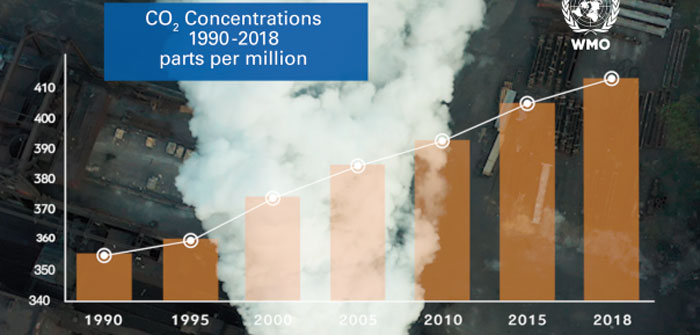Greenhouse gases in the atmosphere hit a record in 2018, said the WMO, warning of the “severe impacts” of this continuing trend for future generations.
The WMO reported its findings in its Greenhouse Gas Bulletin, which gives the atmospheric concentration of the gases responsible for global warming, rather than emissions.
It found that globally averaged concentrations of carbon dioxide reached 407.8 parts per million in 2018, up from 405.5 parts per million in 2017. The CO2 increase from 2017 to 2018 was about the same as from 2016 to 2017 and just above the average for the last decade, the WMO said.
“There is no sign of a slowdown, let alone a decline, in greenhouse gases concentration in the atmosphere despite all the commitments under the Paris Agreement on Climate Change,” said WMO Secretary-General Petteri Taalas.
“We need to translate the commitments into action and increase the level of ambition for the sake of the future welfare of mankind,” he said.
CO2 stays in the atmosphere for centuries and in the oceans for even longer, meaning that no matter what is done now, future generations will be dealing with the repercussions of current emission levels far into the future.
According to the bulletin, concentrations of methane – the second-most important long-lived greenhouse gas – and nitrous oxide also increased by higher amounts than during the past decade.
The findings of the bulletin came from observations from the Global Atmosphere Watch network, which includes weather stations in the remote Arctic, mountain areas and tropical islands.
“This continuing long-term trend means that future generations will be confronted with increasingly severe impacts of climate change, including rising temperatures, more extreme weather, water stress, sea level rise and disruption to marine and land ecosystems,” said a summary of the report.



